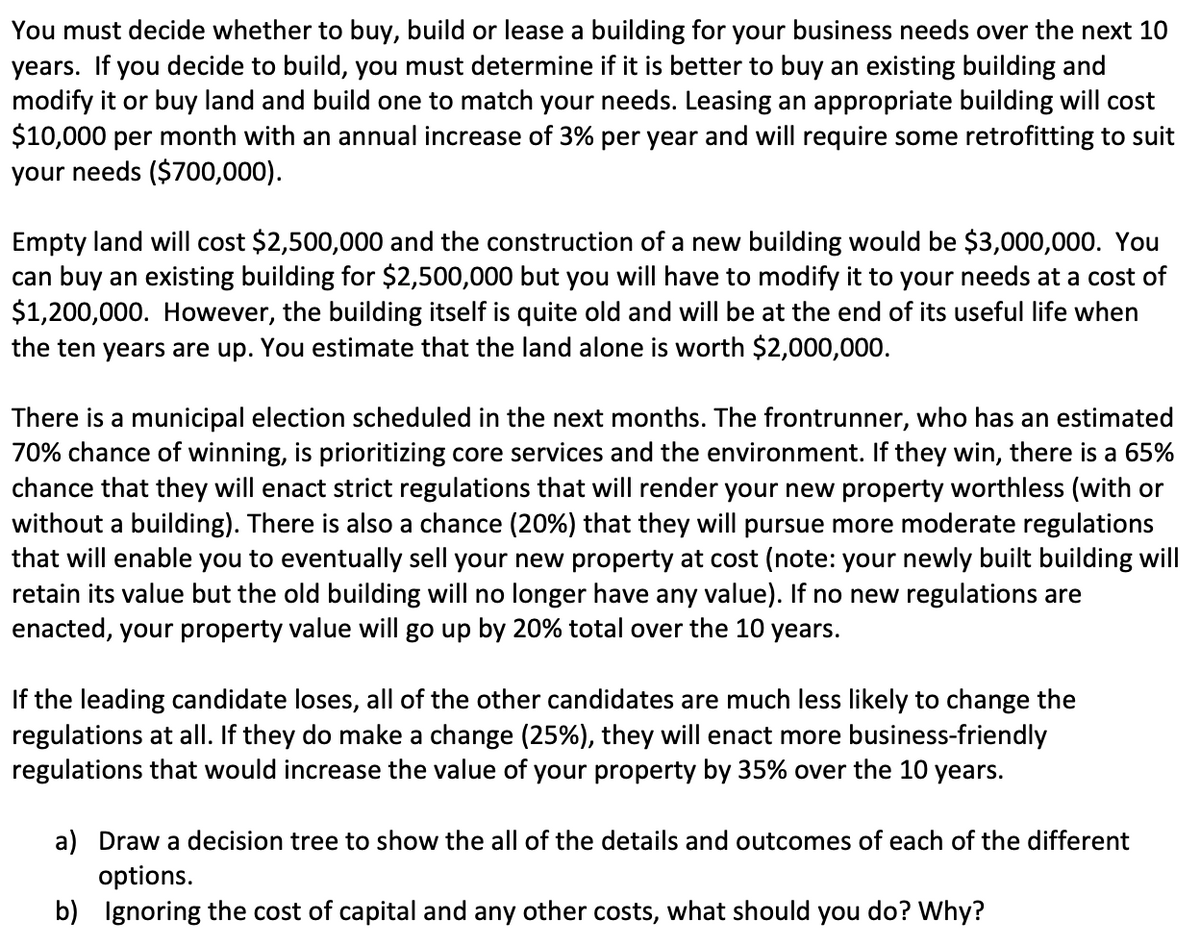a) Draw a decision tree to show the all of the details and outcomes of each of the different options. b) Ignoring the cost of capital and any other costs, what should you do? Why?
DRAW A DECISION TREE - DRAW A DECISION TREE - DRAW A DECISION TREE - DRAW A DECISION TREE (ive asked this question 2 times now and you guys arent answering it properly! DRAW THE DECISION TREE
- - - - - - -- - - - - - - - - - - - -- - - - - - - -- - - - - - - - - - - - -- - - - - - - -- - - - - - - - - - - - -- - - - - - - --
You must decide whether to buy, build or lease a building for your business needs over the next 10 years. If you decide to build, you must determine if it is better to buy an existing building and modify it or buy land and build one to match your needs. Leasing an appropriate building will cost $10,000 per month with an annual increase of 3% per year and will require some retrofitting to suit your needs ($700,000).
Empty land will cost $2,500,000 and the construction of a new building would be $3,000,000. You can buy an existing building for $2,500,000 but you will have to modify it to your needs at a cost of $1,200,000. However, the building itself is quite old and will be at the end of its useful life when the ten years are up. You estimate that the land alone is worth $2,000,000.
There is a municipal election scheduled in the next months. The frontrunner, who has an estimated 70% chance of winning, is prioritizing core services and the environment. If they win, there is a 65% chance that they will enact strict regulations that will render your new property worthless (with or without a building). There is also a chance (20%) that they will pursue more moderate regulations that will enable you to eventually sell your new property at cost (note: your newly built building will retain its value but the old building will no longer have any value). If no new regulations are enacted, your property value will go up by 20% total over the 10 years.
If the leading candidate loses, all of the other candidates are much less likely to change the regulations at all. If they do make a change (25%), they will enact more business-friendly regulations that would increase the value of your property by 35% over the 10 years.
a) DRAW A DECISION TREE to show the all of the details and outcomes of each of the different options.
b) Ignoring the cost of capital and any other costs, what should you do? Why?

Step by step
Solved in 3 steps with 1 images


